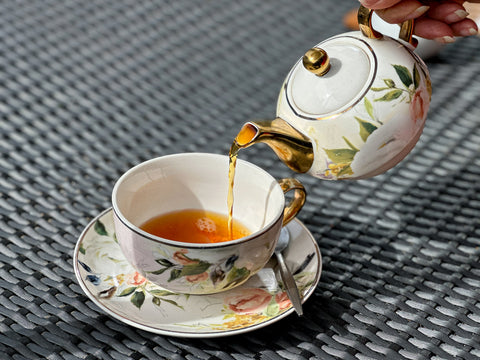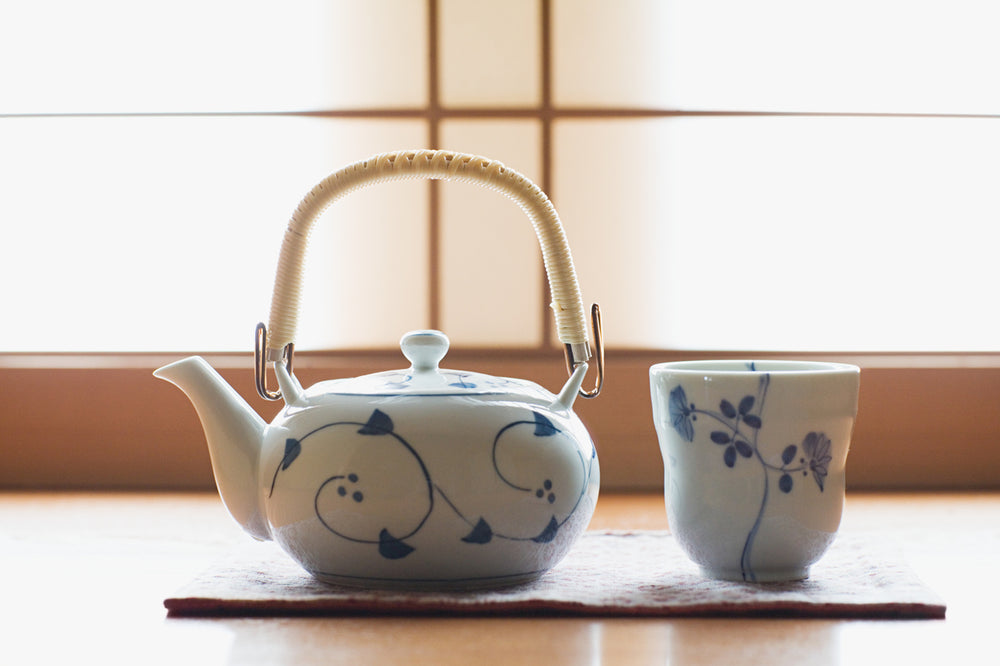Tea is a very special beverage to the British. Even though tea drinking did not originate in Britain, it quickly became famous and was turned into an art. Tea brewing has since been a significant part of British culture. The perfect tea is made only with the perfect teapot, as they allow the aromatic tea leaves to infuse in the water. Teapots also keep tea warm for a longer period, making it easier for tea drinkers to relish a cup of tea later.
Influence of Tea and Teapots

Tea made its way to Britain in the mid-17th century, and within a century, it had become the national beverage of the nation and was relished by people of all classes. The influence of tea on the British was such that they created certain customs and rituals around it, ones that are still in practice today.
Teapots Were a Prized Possession
Drinking tea was highly prized among the homemakers, who ensured everything for the tea-drinking ritual was done perfectly. While other meals could be served in cream-ware or delft vessels, on plates and dishes that didn’t always match, tea drinking was always a ritual in which women predominated over men. It required a special set of utensils, a sugar bowl, a cream jug, tea bowls, and saucers. A slop basin was also a significant part of this ritual because this is how she would wash her priceless pieces while being seated at the tea table.
This is how teapots became an important part of British households and continue to be a dominant crockery in the kitchen.
How Teapots Made their Way to Britain

Tea drinking has its roots in ancient China, dating back to the Sung Dynasty (420-79 AD), where it was initially regarded as a serious pursuit mainly for men. Initially, tea was brewed in bowls, and vessels resembling the teapots of today were likely originally used for wine. However, R. L. Hobson's work, "Wares of the Ming Dynasty," mentions teapots from the Cheng Te period (1506-21). By the late 17th century, Yi-hsing, a prominent pottery centre, was exporting teapots to Europe along with tea shipments. These pots were crafted from unglazed stoneware in brown, buff, and red. They were designed in simple, elegant shapes (like flattened globes, pear shapes, or faceted designs) rather than intricate detailing. Meissen and the Elers brothers in England replicated this style in the early 18th century. Although these pots were initially too small for European use, they eventually evolved into the standard size we are familiar with by the mid-18th century.
When new household items emerge, designers often are unable to resist the urge to let their creativity flow. In the realm of English teapots, there was a phase where they took on the shapes of various objects such as houses, ships, shells, birds, camels, and other animals. They were made from salt-glazed or lead-glazed pottery. Even the renowned Whieldon, known for his refined designs, once crafted a teapot resembling an elephant. Among the rare early Chelsea specimens are some shaped like Chinamen from the early triangle period. One of these Chinamen is seated, holding a protesting parrot with its open beak serving as a spout, while another clutches a snake. This period saw a widespread replication of anything Chinese, so it's likely these pieces were imitations of authentic Chinese wine pots.
Since coffee too was introduced in Britain during the same time, the first teapots looked similar to coffee pots. They were silver pots and had a cylindrical, tapered body with a conical lid. The spout was set at a right angle to the handle of the pot. This teapot was the earliest known example of a teapot made in Britain and looks somewhat similar to silver and pewter coffee pots today.
George Berkeley was the one who commissioned an inscription to be engraved over the silver pot that read ‘this Silver tea Pott’ along with the British East India Company's coat-of-arms appear over it when it was gifted to the Company. Had the inscription not been present, it would be difficult to understand whether the pot was meant for tea or coffee. Silver is a good conductor of heat, so it was perfect to keep the tea inside it warm. The handles, however, were made from wood bone, elephant ivory, or leather-covered metal.
Some Rare Teapots
The term famille rose means ‘pink family’ and was introduced together with famille verte (green family) in 1862 by Albert Jacquemart to categorise Qing dynasty porcelain by their colour palettes.
The Egoist –the most expensive teapot in the world, also listed in the Guinness Book of World Records: it was commissioned by the N Sethia Foundation, a charitable foundation in the UK started by Nirmal Sethia.
Teapots: Close to the Heart of British
Over the centuries, teapots have changed their design, shape, and size, but they remain part of the British household. Some of the teapots that are quite famous today are:
Wedgewood Teapots
In 1795, Queen Charlotte commissioned a tea service from this company. They were especially known for their cream-coloured earthenware, which is named 'Queen's Ware'. The owner, Josiah Wedgewood, was known as 'Potter to Her Majesty'. Even today, they create some of the most intricate patterns on the teapots, and every teapot is a classic piece.
Brown Betty Teapots

Brown Betty teapots have held a special place in the hearts of the British since the Victorian Era. They are made from red clay, which is found only in Staffordshire and holds the heat more effectively compared to other clays. Their shape makes it easy to swirl the leaves, and their unglazed surface is great for enhancing the flavour of the tea.
Novelty teapots, Bone China teapots, silver teapots, and porcelain teapots are also quite famous in Britain.


 Easter 2026
Easter 2026
 Frozen Food
Frozen Food
 Baking
Baking
 Beans, Peas, Soups & Tins
Beans, Peas, Soups & Tins
 Biscuits, Crackers & Cookies
Biscuits, Crackers & Cookies
 Candy / Sweets
Candy / Sweets
 Crisps & Snacks
Crisps & Snacks
 Chemist / Pharmacy
Chemist / Pharmacy
 Desserts
Desserts
 Gravy, Stock & Paste
Gravy, Stock & Paste
 Haggis
Haggis
 Indian Sauces, Paste and Pickle
Indian Sauces, Paste and Pickle
 Jams & Preserves
Jams & Preserves
 Poppy Appeal
Poppy Appeal
 Pot Noodles & Super Noodles
Pot Noodles & Super Noodles
 Scone Mix
Scone Mix
 Gluten-Free / Free From
Gluten-Free / Free From
 Tea Accessories
Tea Accessories
 Teapot & Tea sets
Teapot & Tea sets
 Tea For One
Tea For One
 Sugar & Creamer
Sugar & Creamer
 Tableware
Tableware
 Serveware
Serveware
 Plates & Trays
Plates & Trays
 Bowls
Bowls
 Cups & Saucers
Cups & Saucers
 Mugs
Mugs
 Silverware
Silverware
 Dinnerware - Accessories
Dinnerware - Accessories
 Dinnerware - For Pets
Dinnerware - For Pets
 Victoria Eggs - Hand-Drawn UK Homeware
Victoria Eggs - Hand-Drawn UK Homeware
 Jewelry & Accessories
Jewelry & Accessories
 Sale
Sale
 Christmas Gifts
Christmas Gifts

